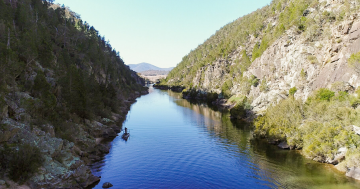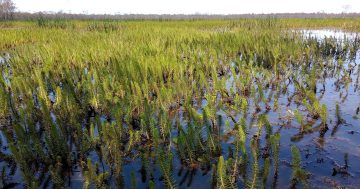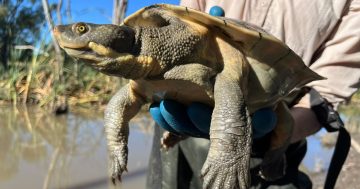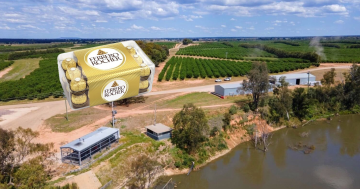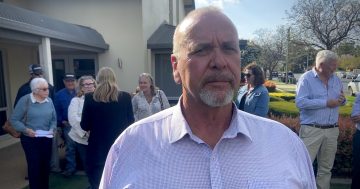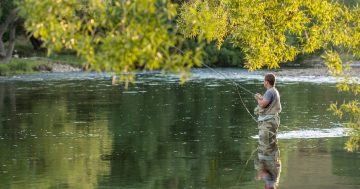
“Flow management in the upper Murrumbidgee River is complex, involving two state jurisdictions and the Snowy Hydro Scheme, but sometimes it feels like it’s all just put in the ‘too-hard’ basket,” says Antia Brademann. Photo: Supplied.
There’s a trickle of a stream meandering through Long Plain up in Kosciuszko National Park with a sign saying ‘Murrumbidgee River’.
Murrumbidgee is the Wiradjuri word for ‘big water’.
As you drive across the river – and you can – it’s nigh on impossible to reconcile that infant flow with its downstream maturation as Australia’s second longest river that eventually meets the Murray River way out west at Balranald, NSW.
But competing needs for the 1485km of water that was discovered by white explorers in 1821 makes it a waterway under siege. It was, in part, the subject of a recent ‘Fish and Flows’ forum held in Canberra.
Representatives from conservation groups, NSW and ACT state governments, scientists, waterway practitioners and the community met to discuss the future of the the often-forgotten headwaters of the upper Murrumbidgee River.
And the news was mostly grim.
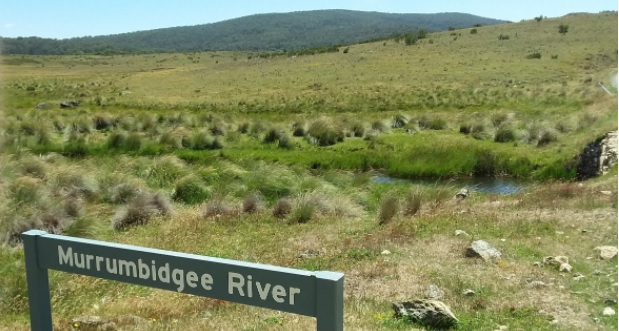
The Murrumbidgee River on Long Plain in Kosciuszko National Park. Photo: Supplied.
While the one-day forum highlighted the great work being done by the range of stakeholders to recover native fish populations and improve the overall health of the upper Murrumbidgee, it was also made clear the upper waterway is at risk of being left behind by water legislation and flow management compromising the river’s social, cultural and ecological values.
The forum was led by the Upper Murrumbidgee Demonstration Reach (UMDR) – a program that covers a 320km section of the Murrumbidgee River from Tantangara Dam to Burrinjuck Dam, flowing through both NSW and the ACT, and funded by the Murray-Darling Basin Authority under the Native Fish Recovery Strategy.
The program aims to get all stakeholders working together to recover native fish and improve river health by building capacity and demonstrating techniques that landholders and community groups can use to rehabilitate and protect aquatic and riparian habitat, impacted by a range of threats including historically poor land management practices.
UMDR facilitator Antia Brademann said the goal of the forum was to get stakeholders together to share their work, gain greater understanding of the key issues faced by the river, and discuss opportunities for ongoing collaboration.
“The upper Murrumbidgee flows through two state jurisdictions, and what happens upstream has flow-on effects for what happens downstream,” she said.
“It is critical that all stakeholders work together to address threats, including flow management, if we want to ensure we have a thriving river system providing healthy habitat for native fish and other native species long into the future.”
The forum heard that current flow management arrangements allow 96 per cent of headwater flows to be extracted at Tantangara Dam, as part of the Snowy Hydro Scheme.
As a result, the flows in the upper Murrumbidgee are well below the scientifically accepted level required to maintain a healthy river ecosystem, said Ms Brademann.
Monitoring data presented at the forum showed how parts of the river ran dry during the 2019-2020 Black Summer bushfires with critical water shortages and algal blooms experienced by local communities.
Concerns were raised that, in the future, such events could also impact native fish.

The Upper Murrumbidgee Demonstration Reach forum in Canberra heard that current flow management arrangements allow 96 per cent of headwater to be extracted at Tantangara Dam as part of the Snowy Hydro Scheme. Photo: Supplied.
Murray-Darling Basin Sustainable River Audit (2) reports dating back to 2008 had already found that fish communities in the upper Murrumbidgee River were in very poor condition, with high numbers of alien fish and very low numbers of native fish.
The upper Murrumbidgee River is critical habitat for several nationally threatened species including Macquarie perch, trout cod, Murray cod, silver perch, two-spined blackfish, golden perch, mountain galaxias and Australian smelt.
Ms Brademann said that while the Murrumbidgee Water Resource Plan (WRP) is currently being redrafted, it is an important opportunity to ensure threats to the upper Murrumbidgee River are given consideration.
“Respective state governments are currently redrafting water resource (and associated water sharing) plans and, once accredited, these water plans will be the principle mechanisms to achieve objectives sought by the Murray-Darling Basin Plan,” she said.
“This is an opportunity to create more sustainable water flows in the upper Murrumbidgee and ensure the hard work being done by a huge range of stakeholders to recover native fish and improve river health are not compromised.”
NSW has been told to revise almost all of its detailed 20 WRPs after they were found to be insufficient by the Murray-Darling Basin Authority.
“Flow management in the upper Murrumbidgee is complex, involving two state jurisdictions and the Snowy Hydro Scheme, but sometimes it feels like it’s all just put in the too-hard basket,” said Ms Brademann.
“This won’t cut it going forward. We’ve already lost several fish species from the upper Murrumbidgee since European colonisation and we can’t afford to lose any more.”






